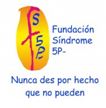What is 5p Syndrome?
5p syndrome is a genetic disorder caused by a deletion of part of the short arm of chromosome 5. This condition is characterized by a characteristic feline cry in affected infants due to abnormalities of the larynx (e.g., larynx hypoplasia).
5p syndrome affects an estimated 1 in 20,000 to 50,000 live births and is 4: 3 more common in women.
5p syndrome characteristics
Clinical features of this condition are:
- Biomedical properties: small head circumference (microcephaly), unusually round face, arched or ogival palate, hypotension, foot deformities, hearing (hypersensitivity to noise) and visual disorders (strabismus).
- Cognitive traits: intellectual disability, short attention span, delayed development, emotional dysregulation.
- Behavioral characteristics: Difficulty dealing with others, stereotypes, and obsessive behavior.
- Communication features: Delay and difficulties in acquiring language; receptive language skills seem to be better than expressive language skills.
Symptoms vary widely between people with 5p syndromed, depending on the size of the genetic material deleted.
The 5p Syndrome Foundation
The Fundación Síndrome 5p- (5p Syndrome Foundation) supports families of people with 5p syndrome through therapy and counseling. It also carries out public relations and awareness-raising activities and supports research to improve the quality of life of those affected and their families.
The foundation’s experts develop personalized intervention programs from a multidisciplinary approach for each individual. For this reason, the foundation’s team consists of a speech therapist, two psychologists and two occupational therapists.
Speech Therapy:Restoring impaired skills and maintaining acquired skills to help patients achieve their highest possible level of functioning; Stimulating intentional communication, use of augmentation and alternative communication devices (AAC), etc.
Psychology:Provision of attention, advice and psychological support through the development of tailor-made workshops and interventions. Behavioral intervention for children.
Occupational Therapy: Promotion of maximum independence in activities of daily living (ADLs) as well as promotion of suitable sensory integration measures.
Our experience with NeuronUP
Our professionals rely on NeuronUP, a web platform for cognitive stimulation and rehabilitation that aims to train cognitive functions using information and communication technology (ICT).
This platform has been very well received due to the growth of new technologies. Our customers direct their behavior to motivational stimuli such as the use of a tablet, computer or other electronic device.
Sofia and NeuronUP
15 year old Sofia was born with 5p syndrome. She enjoys swimming, playing the drums, and enjoys playing interactively. This last hobby inspired the use of NeuronUP in her treatment. She has been using the platform for three years and attends one-hour sessions every week. For these sessions, the occupational therapist is responsible for planning the activities based on her performance level. These activities are specifically aimed at reading and writing skills, sustained attention, and leadership roles. In addition, Sofía performs tasks aimed at improving Daily Living Activities (ADLs) that complement and support occupational therapy interventions.
In summary, Sofia’s improvement lies in her motivation for NeuronUP, the variety of activities available, and the ability to tailor activities to suit her skills and interests, thus enhancing the generalization of learning.
If you want to learn more about rare diseases, you might want to check out this blog about Tourette’s Syndrome:
![]() Latest posts by Síndrome5p- (See everything)
Latest posts by Síndrome5p- (See everything)
Summary
![]()
item name
The 5p Syndrome and Neuropsychological Rehabilitation: Sofia’s Story
description
In the story of Sofía affected by 5p syndrome, we examine the effectiveness of neuropsychological rehabilitation.
author
5p Syndrome Foundation
Editor’s name
NeuronUP
Publisher logo
![]()

